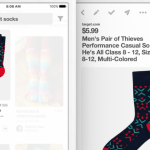

Infographics are a popular topic (and sometimes target) for discussion amongst anyone doing online marketing. A sharp uptick in the volume of infographics being created has made getting your graphic “heard above the noise” more difficult. But infographics can still be an extremely effective tactic for generating awareness, communicating a story and getting traffic and earned links.
One challenge some folks run into with infographics and data visualizations (not unlike most types of content) is that they view their industry or area of focus as “too boring” to generate relevant ideas for infographics that will also get traction socially and with bloggers. After all, to make it a success you need to generate that attention, traffic, and earned links. This is a particularly popular objection with companies considering developing and promoting infographics for B2B marketing.
There are a lot of different ways to generate shareworthy content ideas for your niche. Businesses are generating interesting data visualizations all the time. So we’ll talk specifically about some methods for developing ideas for B2B focused infographics, with examples.
Tie Your B2B Infographic to a Timely Industry Hook
One important thing to keep in mind in creating infographics (or other types of content as well, for that matter) is that if you think hard enough about your niche, you can likely come up with an angle that bloggers and press will be interested in.
Look at content that’s created in publications related to what you do. What types of events and news stories are they regularly focusing coverage on? What kind of interesting data visualization can you create that will add to that coverage and discussion?
Quarterly Earnings or Annual Holidays
WordStream (my former employer) created an infographic titled how Google makes its money. They created another on the industries contributing to Google’s revenue, which performed very well. Both were launched right after Google released their quarterly earnings report. The tech and business press are always looking for information and additional angles to talk about earning reports from big companies. So the timing of the graphic’s release helped in both cases.
The nice thing about events like quarterly earnings is that they’re inevitable (they happen every quarter). So you can plan for them and have the graphic ready to launch as they come up.
Noteworthy News Events

These can be a little trickier because you have to time them specifically with a news event (and frequently you have to get a little lucky regarding when you get the graphic out, as you may be dependent on the shelf life of the story). But if you get it right, you can really have the graphic pop.
Veracode, a Web application security company, released this infographic on Twitter hacks the week of a prominent Twitter hack of USA Today’s account. As a result, the site received links and mentions from prominent sites like Mashable and ReadWrite.
“Explainer” Graphics & How-Tos

Like with any content, if you can cover the key points surrounding a central concept that many people in your niche may be interested in and/or confused by, or if you can explain how to execute on something, people will be willing to share what you’ve created. There are a number of tactics you can take in creating explainer and how-to infographics for B2B, including:
- Offer definitions to commonly used terms and outline the current configuration of your industry, including key players, etc. Be careful not to be overly self-aggrandizing.
- Find a salacious related field / topic to yours and go into depth on it.
- Offer a simple, easy to understand statistical breakdown of an existing problem. Sometimes these are the easiest to share.
- You can also leverage expertise for an interesting graphic that explains a topic. If you’re a designer, creating a graphic on use of fonts and colors is a pretty obvious example. But if you’re a trade show company with some expertise on what catches people’s attention, that can make for an interesting graphic as well.
Graphics Aimed at a Specific Niche of Likely Sharers
Certain niches just share content more. With infographics, you’re typically looking for a topic that will be interesting to bloggers and social sharers.
So think about how you might relate your topic back to topics like tech, social media or just passionate folks who blog frequently. Example: parents or folks interested in green living.
Maybe you can look at the effects of a popular topic such as the overall impact of your industry in a way your readers, and bloggers and sharers, will find interesting.
You Can Create a Compelling Infographic – But Maybe You Shouldn’t
Regardless of how “boring” you think your B2B product or service may be, you can certainly come up with an idea for a compelling graphic. If you focus on coming up with a topic that bloggers are likely to want to write about and sharers are likely to share, you’ll even have a strong chance of creating a successful graphic.
That still doesn’t necessarily mean infographics are for you, though.
Good infographics are expensive. They have to be researched, designed and promoted. Even very well thought-out graphics can totally flop and fail to generate much in the way of conversation, links and shares. So if you own a small business and designing a single graphic eats up so much of your budget that you absolutely have to have them be a success, you should probably be leveraging other tactics.
With any content marketing activities where you’re creating something and then relying on others to link to it, you really need to take a “portfolio” approach to content creation and promotion. Some of your efforts will fail. Some will be better than you thought. In aggregate, they should provide the returns you’re expecting for the total cost you’re laying out.
If you can’t afford to do them more than once, there’s a strong chance you should be picking another tactic instead.
Infograph Photo via Shutterstock
[“source-smallbiztrends”]




